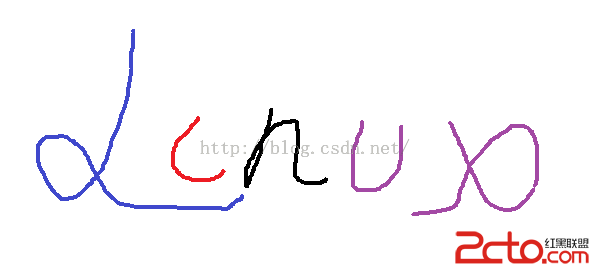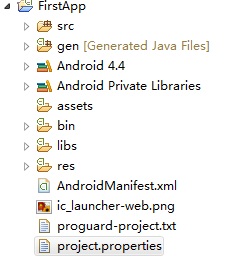編輯:關於Android編程
關於Android Touch事件傳遞機制我之前也寫過兩篇文章,自認為對Touche事件還是理解得比較清楚的,但是最近遇到的一個問題,讓我再次對Android Touche事件進行一次學習。
我的關於Android Touche事件傳遞機制的文章如下:
http://blog.csdn.net/yuanzeyao/article/details/37961997
http://blog.csdn.net/yuanzeyao/article/details/38025165
我在這兩篇文章中得出過以下結論:
1、如果一個view是clickable的,那麼這個View的onTouchEvent是一定會返回true的,也就是說任何觸摸事件都會被消費掉
2、如果一個View對於ACTION_DOWN事件沒有消費掉(onTouchEvent 返回false),那麼後續的ACTION_MOVE,ACTION_UP是都不會接受到的,也就是沒有機會處理這些事件,這些事件都是在父View裡面給處理了
3、如果一個ViewGroup想要攔截事件(不讓事件傳遞到子View),那麼它只需要改寫ViewGroup的onInterceptTouchEvent(MotionEvent ev) 方法,讓他返回true,或者調用requestDisallowInterceptTouchEvent(true);
4、Android中的Touche事件是從底層向上層傳遞的 Activity->DecorView->ViewGroup->View
理解了上面的問題,我們就開始看看我所遇到的問題吧,
在使用SlideMenu的時候,在中的Activity中僅僅放置一個TextView,你會發現SlideMenu無法滑動,當時通過頂部的Title可以滑動,由於對SlideMenu用的不是很熟,當時以為是SlideMenu的哪個屬性用錯了,後來一直沒有解決問題,直到一位網友說設置TextView的clickable為true就可以解決問題,我嘗試了一下,還真行!哈哈。。。,這個裡面的原因你理解了嗎?如果沒有理解,請繼續往下看
按照我之前對Touche事件的理解,如果設置clickable,那麼Touche事件肯定就被TextView給消費掉了,如果被TextView消費掉了,那麼SlideMenu如何實現滑動?要解開這個問題答案,還是看看SlideMenu的源碼嗎
我們首先看看SlideMenu中CustomViewAbove和Touche有關的方法
@Override
public boolean onInterceptTouchEvent(MotionEvent ev) {
if (!mEnabled)
return false;
final int action = ev.getAction() & MotionEventCompat.ACTION_MASK;
if (action == MotionEvent.ACTION_DOWN && DEBUG)
Log.v(TAG, Received ACTION_DOWN);
if (action == MotionEvent.ACTION_CANCEL || action == MotionEvent.ACTION_UP
|| (action != MotionEvent.ACTION_DOWN && mIsUnableToDrag)) {
endDrag();
return false;
}
switch (action) {
case MotionEvent.ACTION_MOVE:
try{
final int activePointerId = mActivePointerId;
if (activePointerId == INVALID_POINTER)
break;
final int pointerIndex = this.getPointerIndex(ev, activePointerId);
final float x = MotionEventCompat.getX(ev, pointerIndex);
final float dx = x - mLastMotionX;
final float xDiff = Math.abs(dx);
final float y = MotionEventCompat.getY(ev, pointerIndex);
final float yDiff = Math.abs(y - mLastMotionY);
if (DEBUG) Log.v(TAG, onInterceptTouch moved to:( + x + , + y + ), diff:( + xDiff + , + yDiff + ), mLastMotionX: + mLastMotionX);
if (xDiff > mTouchSlop && xDiff > yDiff && thisSlideAllowed(dx)) {
if (DEBUG) Log.v(TAG, Starting drag! from onInterceptTouch);
startDrag();
mLastMotionX = x;
setScrollingCacheEnabled(true);
} else if (yDiff > mTouchSlop) {
mIsUnableToDrag = true;
}
}
catch(IllegalArgumentException e)
{
e.printStackTrace();
}
break;
case MotionEvent.ACTION_DOWN:
mActivePointerId = ev.getAction() & ((Build.VERSION.SDK_INT >= 8) ? MotionEvent.ACTION_POINTER_INDEX_MASK :
MotionEvent.ACTION_POINTER_INDEX_MASK);
mLastMotionX = mInitialMotionX = MotionEventCompat.getX(ev, mActivePointerId);
mLastMotionY = MotionEventCompat.getY(ev, mActivePointerId);
if (thisTouchAllowed(ev)) {
mIsBeingDragged = false;
mIsUnableToDrag = false;
if (isMenuOpen() && mViewBehind.menuTouchInQuickReturn(mContent, mCurItem, ev.getX() + mScrollX)) {
mQuickReturn = true;
}
} else {
mIsUnableToDrag = true;
}
break;
case MotionEventCompat.ACTION_POINTER_UP:
onSecondaryPointerUp(ev);
break;
}
if (!mIsBeingDragged) {
if (mVelocityTracker == null) {
mVelocityTracker = VelocityTracker.obtain();
}
mVelocityTracker.addMovement(ev);
}
return mIsBeingDragged || mQuickReturn;
}
再看看onToucheEvent.java
@Override
public boolean onTouchEvent(MotionEvent ev) {
if (!mEnabled)
return false;
// if (!mIsBeingDragged && !thisTouchAllowed(ev))
// return false;
if (!mIsBeingDragged && !mQuickReturn)
return false;
final int action = ev.getAction();
if (mVelocityTracker == null) {
mVelocityTracker = VelocityTracker.obtain();
}
mVelocityTracker.addMovement(ev);
switch (action & MotionEventCompat.ACTION_MASK) {
case MotionEvent.ACTION_DOWN:
/*
* If being flinged and user touches, stop the fling. isFinished
* will be false if being flinged.
*/
completeScroll();
// Remember where the motion event started
mLastMotionX = mInitialMotionX = ev.getX();
mActivePointerId = MotionEventCompat.getPointerId(ev, 0);
break;
case MotionEvent.ACTION_MOVE:
if (!mIsBeingDragged) {
if (mActivePointerId == INVALID_POINTER)
break;
final int pointerIndex = getPointerIndex(ev, mActivePointerId);
final float x = MotionEventCompat.getX(ev, pointerIndex);
final float dx = x - mLastMotionX;
final float xDiff = Math.abs(dx);
final float y = MotionEventCompat.getY(ev, pointerIndex);
final float yDiff = Math.abs(y - mLastMotionY);
if (DEBUG) Log.v(TAG, onTouch moved to:( + x + , + y + ), diff:( + xDiff + , + yDiff + )
mIsBeingDragged: + mIsBeingDragged + , mLastMotionX: + mLastMotionX);
if ((xDiff > mTouchSlop || (mQuickReturn && xDiff > mTouchSlop / 4))
&& xDiff > yDiff && thisSlideAllowed(dx)) {
if (DEBUG) Log.v(TAG, Starting drag! from onTouch);
startDrag();
mLastMotionX = x;
setScrollingCacheEnabled(true);
} else {
if (DEBUG) Log.v(TAG, onTouch returning false);
return false;
}
}
if (mIsBeingDragged) {
// Scroll to follow the motion event
final int activePointerIndex = getPointerIndex(ev, mActivePointerId);
if (mActivePointerId == INVALID_POINTER) {
break;
}
final float x = MotionEventCompat.getX(ev, activePointerIndex);
final float deltaX = mLastMotionX - x;
mLastMotionX = x;
float oldScrollX = getScrollX();
float scrollX = oldScrollX + deltaX;
final float leftBound = getLeftBound();
final float rightBound = getRightBound();
if (scrollX < leftBound) {
scrollX = leftBound;
} else if (scrollX > rightBound) {
scrollX = rightBound;
}
// Don't lose the rounded component
mLastMotionX += scrollX - (int) scrollX;
scrollTo((int) scrollX, getScrollY());
pageScrolled((int) scrollX);
}
break;
case MotionEvent.ACTION_UP:
if (mIsBeingDragged) {
final VelocityTracker velocityTracker = mVelocityTracker;
velocityTracker.computeCurrentVelocity(1000, mMaximumVelocity);
int initialVelocity = (int) VelocityTrackerCompat.getXVelocity(
velocityTracker, mActivePointerId);
final int scrollX = getScrollX();
// final int widthWithMargin = getWidth();
// final float pageOffset = (float) (scrollX % widthWithMargin) / widthWithMargin;
// TODO test this. should get better flinging behavior
final float pageOffset = (float) (scrollX - getDestScrollX(mCurItem)) / getBehindWidth();
final int activePointerIndex = getPointerIndex(ev, mActivePointerId);
if (mActivePointerId != INVALID_POINTER) {
final float x = MotionEventCompat.getX(ev, activePointerIndex);
final int totalDelta = (int) (x - mInitialMotionX);
int nextPage = determineTargetPage(pageOffset, initialVelocity, totalDelta);
setCurrentItemInternal(nextPage, true, true, initialVelocity);
} else {
setCurrentItemInternal(mCurItem, true, true, initialVelocity);
}
mActivePointerId = INVALID_POINTER;
endDrag();
} else if (mQuickReturn && mViewBehind.menuTouchInQuickReturn(mContent, mCurItem, ev.getX() + mScrollX)) {
// close the menu
setCurrentItem(1);
endDrag();
}
break;
case MotionEvent.ACTION_CANCEL:
if (mIsBeingDragged) {
setCurrentItemInternal(mCurItem, true, true);
mActivePointerId = INVALID_POINTER;
endDrag();
}
break;
case MotionEventCompat.ACTION_POINTER_DOWN: {
final int index = MotionEventCompat.getActionIndex(ev);
final float x = MotionEventCompat.getX(ev, index);
mLastMotionX = x;
mActivePointerId = MotionEventCompat.getPointerId(ev, index);
break;
}
case MotionEventCompat.ACTION_POINTER_UP:
onSecondaryPointerUp(ev);
int pointerIndex = this.getPointerIndex(ev, mActivePointerId);
if (mActivePointerId == INVALID_POINTER)
break;
mLastMotionX = MotionEventCompat.getX(ev, pointerIndex);
break;
}
return true;
}
如果我們設置了clickable,那麼第一個ACTION_DOWN就被TextView處理了,所以後面每個事件都會傳遞到TextView(前提是不被攔截,實際結果是被攔截,並被SlideMenu處理,所以SlideMenu滑動了)
 Android輸入法與表情面板切換時的界面抖動問題解決方法
Android輸入法與表情面板切換時的界面抖動問題解決方法
昨天琢磨了下Android的輸入法彈出模式,突然發現利用動態切換輸入法的彈出模式可以解決輸入法抖動的問題。具體是怎樣的抖動呢?我們先看微博的反面教材。 【具體表現為:表情
 ActionProvider ToolBar 自定義Menu小紅點
ActionProvider ToolBar 自定義Menu小紅點
今天的幾個目標:1. 自定義ActionProvider2. Toolbar ActionBar自定義Menu3. Toolbar ActionBar 右側Menu添加角
 Android多點觸控技術和應用框架
Android多點觸控技術和應用框架
Android多點觸控技術跟Linux輸入子系統緊密相關。本文將從應用的角度說明Android多點觸控技術的接口和應用。一、多點觸控場景分析網絡上有關Android多點觸
 Android學習筆記(二)App工程文件分析
Android學習筆記(二)App工程文件分析
App工程文件分析關於如何創建一個最簡單的Android App請參照鏈接:《 Android學習筆記(一)環境安裝及第一個hello world 》 http://ww